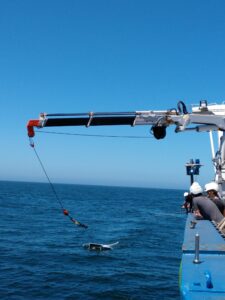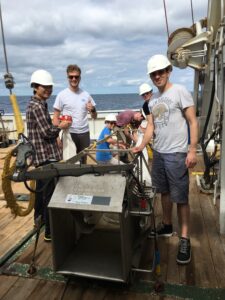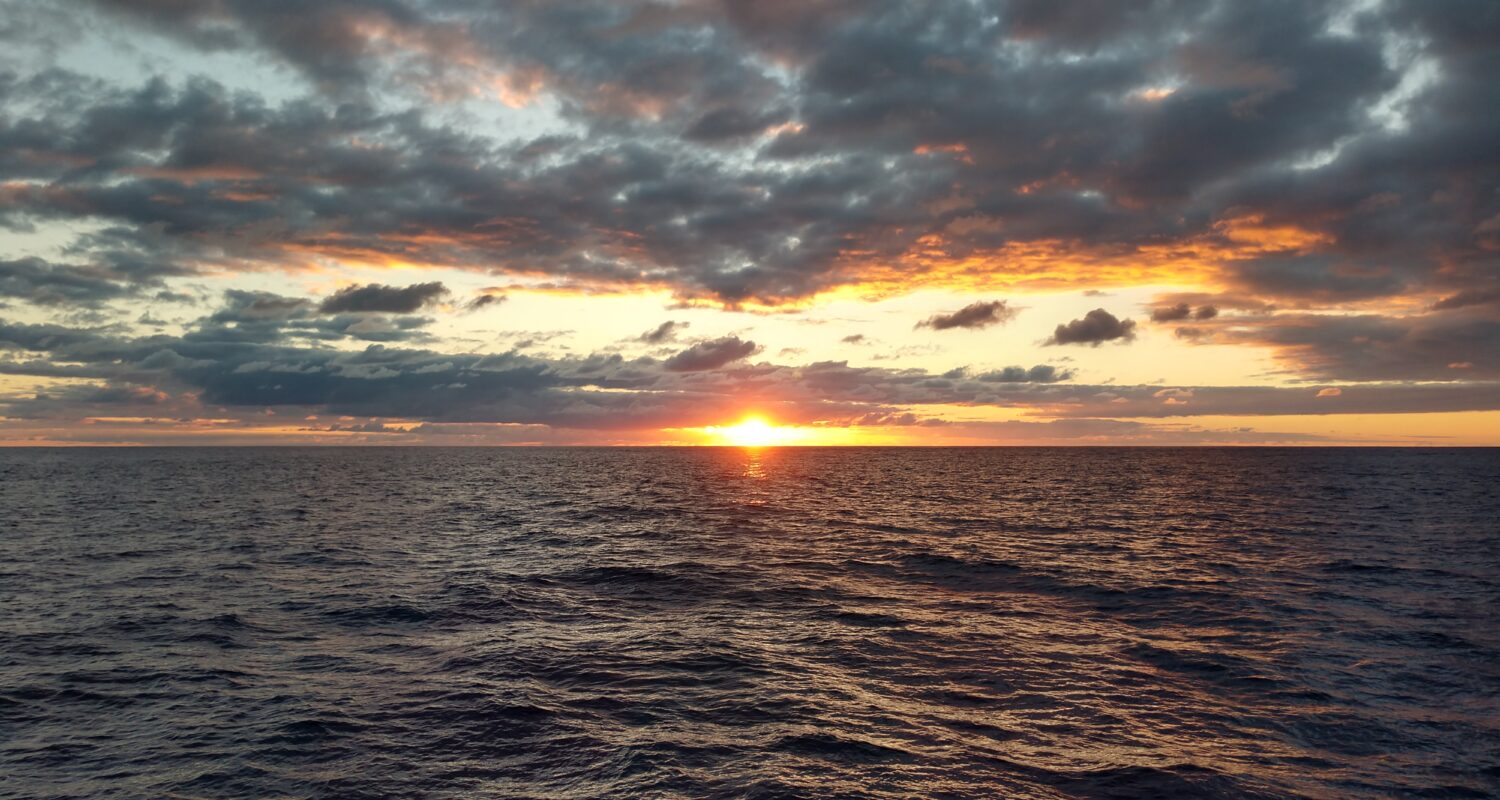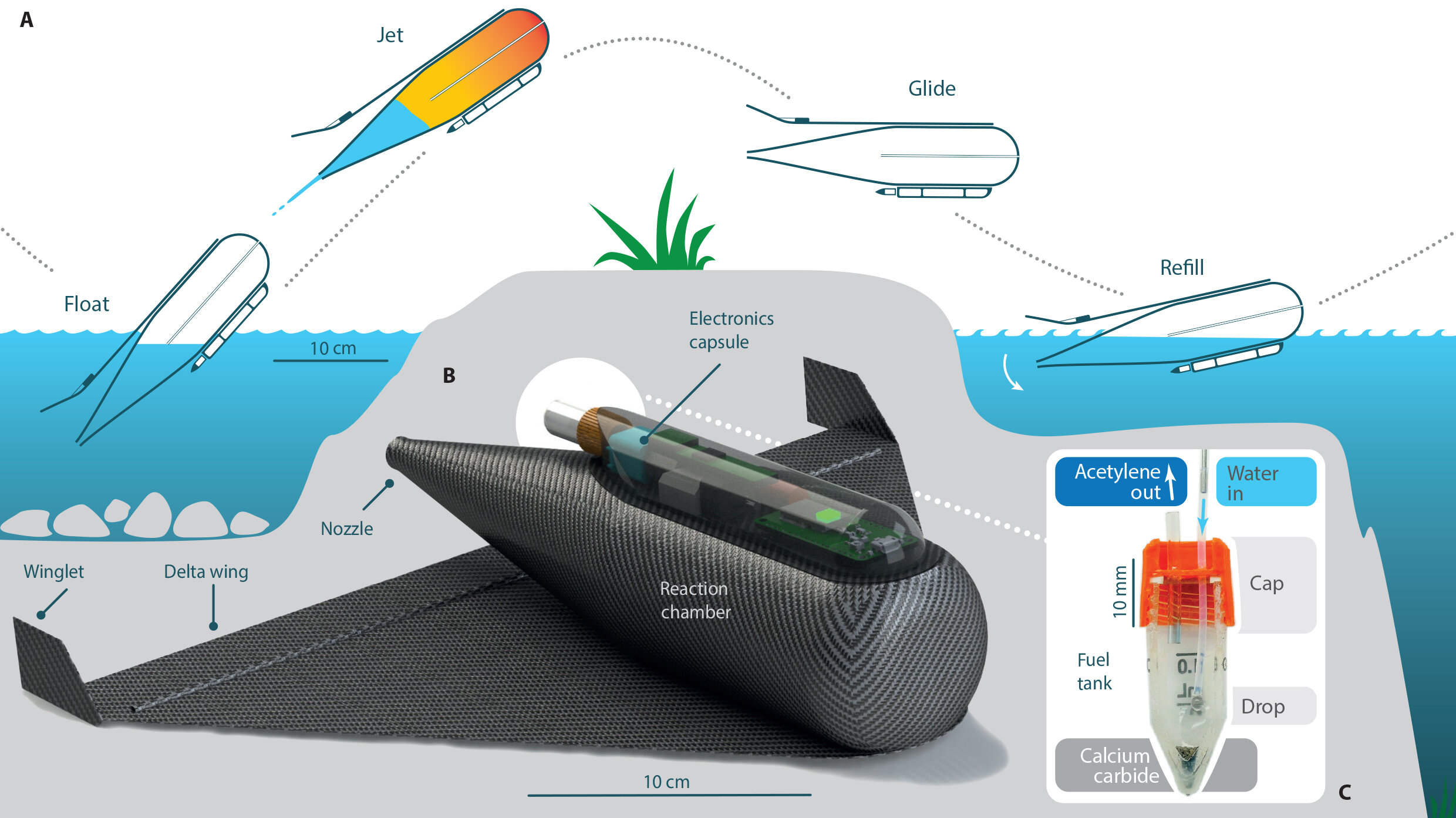Reference: Zhao, S., Zettler, E. R., Bos, R. P., Lin, P., Amaral-Zettler, L. A., & Mincer, T. J. (2022). Large quantities of small microplastics permeate the surface ocean to abyssal depths in the South Atlantic Gyre. Global Change Biology, 00, 1– 16. https://doi.org/10.1111/gcb.16089
Link: https://onlinelibrary.wiley.com/doi/10.1111/gcb.16089
‘Missing’ Microplastics
Microplastics are concentrated in ocean gyres and at locations where large ocean currents meet (convergence zones). Plastic debris is carried by major ocean currents, swept up in the gyres, and transported to the center. Scientists have found high concentrations of microplastics at these ‘hotspots’, but very few have looked below the surface or at small microplastics (SMP; <100 µm). As most of the global estimates of microplastic abundance in our oceans are based on studies that have only skimmed the surface, it is likely there are many small microplastics ‘missing’ from the picture. Small microplastics pose a greater threat to marine ecosystems than large microplastics (LMP; >300 µm) as they are more easily consumed by filter-feeders and plankton and could cause more internal harm as they cross over barriers in the tissues. Despite this, not much is known about the risk that microplastics pose to marine life or exactly what size and types of microplastics are a threat. To take a step towards closing these gaps in our knowledge, researchers at Florida Atlantic University determined the numbers and types of large and small microplastics within the water column of the South Atlantic Subtropical Gyre.
Going below the surface
There has not been enough research on how many SMP are in the water column or where they can be found relative to LMP. To get a better idea, the researchers filtered large and small microplastics from the water column at different depths starting at the surface and working their way down to the bottom. Any particle that was suspected to be microplastics were identified using a method called micro-Fourier transform infrared spectroscopy (µFTIR). This method provides a sort of chemical fingerprint, a spectrum, that can be matched to a specific kind of plastic (polyethylene, polypropylene, polystyrene). Features of the spectrum can also indicate how broken-down the plastic is. The size and density of the confirmed microplastics were also used to shed light on the time it takes for different particles to settle to the bottom and why certain types of plastic are found at different depths.

Major findings
The number and location of microplastics varied throughout the water column and across sampling areas. For example, the number of SMP decreased closer to the bottom in all sampling areas except one where there were weak currents that allowed the SMP to accumulate near the bottom. Twice as many SMP were found in the water column than LMP. This is a unique finding that suggests other studies have underestimated the abundance of microplastics in our waters by only sampling microplastics larger than 100 µm. The researchers found that the types of plastics changed throughout the water column. Plastics often used in fishing line and in ship paint were found at depth. It was also obvious that SMP at depth were more degraded than LMP at the surface, providing evidence that small microplastics fragment from larger particles and continue to degrade as they settle out of the surface to greater depths.

So, where are the microplastics?
Previous works have greatly underestimated microplastic concentrations in the open ocean. The number of microplastics can be very different from location to location and throughout the water column. Size, buoyancy, and the chemical makeup of the microplastics, along with local ocean circulation patterns, determine where the particles will be found in the water column. For example, SMP are more evenly distributed throughout the water column because they sink more slowly than LMP. Outside of the bandwidth of this research project, we know that biological processes such as microbes growing on the microplastics and microplastics sticking to other sinking particles (aggregates) will increase the settling rate of the microplastic. All these physical and biological factors can contribute to the location of microplastics within the water column and how many microplastics are at each location, making it difficult to accurately estimate the number of microplastics in our world’s oceans, particularly the small ones. Importantly, SMP are more degraded and the harmful impacts on marine life are just beginning to be understood. As it stands, the fate and impact of microplastics in the ocean are complex. This work provides a clearer view of the abundance of small microplastics within an ocean gyre and the chemical nature of these particles.
I am a PhD candidate at the University of Connecticut-Avery Point exploring the dynamic interactions of microplastics and suspension feeding invertebrates. Through both field and laboratory work, I am working to understand which kinds of microplastics (different shapes, sizes, compositions) oysters, mussels, tunicates, and slippersnails consume and determine which species can be used to monitor microplastic pollution in our coastal waters. When I am not working on my research, I enjoy hiking with my husband and pup, being near or in the water, and spending time with family and friends.


